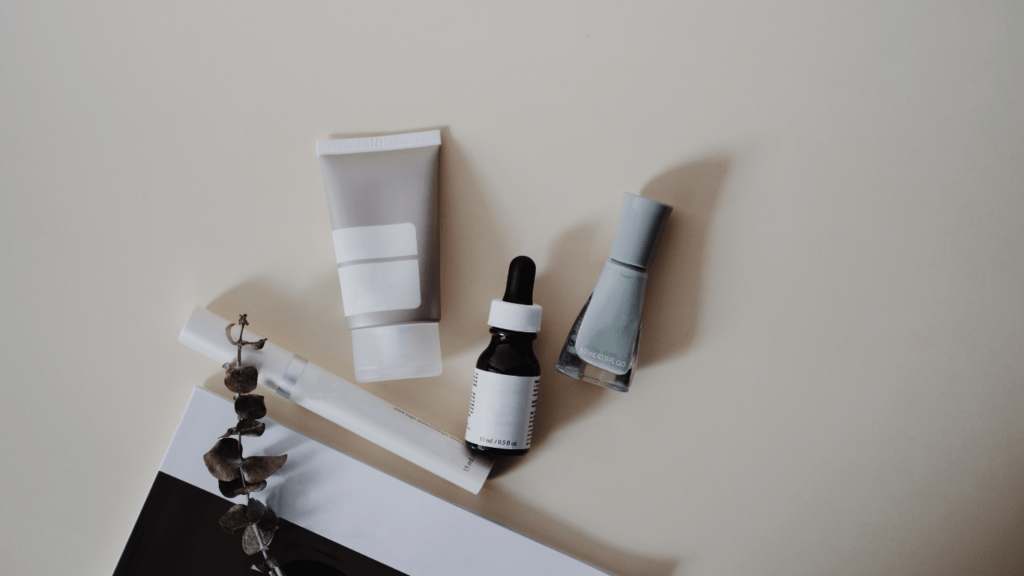Importance of Reading Skincare Labels
Reading skincare labels helps make informed decisions. Labels detail ingredients, their concentrations, and their sources. Consumers can avoid allergens and irritants by knowing what’s in their products. This is crucial for sensitive skin.
Labels also indicate the authenticity of “natural” or “organic” claims. Words like “natural” lack standard definitions, whereas certified organic products follow strict guidelines. Verifying certifications ensures we support brands committed to transparency.
Understanding labels empowers us to choose products that align with our values. Seeking cruelty-free and environmentally-friendly options becomes simpler when we know how to identify them on labels. This contributes to personal well-being and environmental sustainability.
Understanding Common Terms
Navigating skincare labels involves interpreting various terms. Understanding these labels leads to smarter product choices.
Natural vs. Organic
“Natural” products often contain ingredients derived from nature, like plants or minerals. These products avoid synthetic additives. However, the term isn’t heavily regulated, letting companies use small amounts of natural ingredients and still label products as natural.
“Organic” products follow stricter guidelines. They use ingredients grown without synthetic pesticides, fertilizers, and GMOs. Certification from authorities like USDA Organic verifies the adherence to these standards. Checking for official organic certifications ensures the product meets high-quality organic criteria.
Non-toxic and Cruelty-Free
“Non-toxic” suggests a product doesn’t contain harmful chemicals. Yet, this term isn’t strictly regulated, so its interpretation varies. Users still need to review ingredient lists for harmful substances like parabens and phthalates, ensuring freshness.
“Cruelty-Free” indicates no animal testing at any product development stage. Organizations like Leaping Bunny and PETA certify such products. Displaying their logo on a product signifies adherence to cruelty-free practices.
Key Ingredients to Look For
Understanding key ingredients in natural and organic skincare products helps consumers make informed choices for their skin health.
Beneficial Ingredients
Prioritize products with natural ingredients, such as Aloe Vera and Chamomile, which offer soothing properties. Look for antioxidants like Vitamin C and Green Tea Extract, which help fight free radicals and prevent skin aging. Organic oils, like Argan Oil and Jojoba Oil, provide essential hydration and restore skin balance. Hyaluronic Acid, although naturally occurring, when included enhances moisture retention and plumps the skin.
Harmful Chemicals to Avoid
Avoid products containing Parabens and Sodium Lauryl Sulfate. These chemicals cause skin irritation and disrupt hormonal functions. Stay away from synthetic fragrances and Phthalates, which often lead to allergic reactions and potential long-term health issues. Be cautious of products with Formaldehyde-releasing preservatives like DMDM Hydantoin, as they pose cancer risks. Lastly, steer clear of artificial colors and PEG compounds, which compromise skin integrity and contain harmful impurities.
Decoding Certification Symbols
Certification symbols aid in identifying genuinely natural and organic skincare products. Understanding these symbols ensures better choices.
USDA Organic
The USDA Organic seal indicates that a product meets strict federal guidelines for organic farming. It ensures that at least 95% of ingredients are organically produced. For example, ingredients should be free from synthetic pesticides and fertilizers. Products bearing this seal demonstrate adherence to rigorous agricultural standards.
EcoCert
EcoCert offers certification for natural and organic cosmetics. At least 95% of plant-based ingredients must be organically grown. Furthermore, at least 10% of the total product by weight must be organic. For instance, EcoCert ensures product formulations exclude GMOs, parabens, and phenoxyethanol, promoting safer and cleaner choices.
Tips for Reading Labels Effectively

Understanding how to read skincare labels can help consumers make informed choices. Below are specific tips to enhance label-reading skills effectively.
Prioritize Ingredients
Focus on the first five ingredients. These account for the majority of the product’s composition. For example, if Aloe Vera or Vitamin C appears early in the list, the product likely offers substantial benefits.
Identify potential irritants. Ingredients such as:
- parabens
- sulfates
- synthetic fragrances can cause skin issues
Avoid products with these components if sensitive skin is a concern.
Research unfamiliar terms. If an ingredient is unknown, look it up for safety and benefits. Resources like the Environmental Working Group (EWG) database provide detailed information about many skincare ingredients.
Be Wary of Marketing Claims
- Look beyond buzzwords. Terms like “natural,” “pure,” or “eco-friendly” aren’t regulated. Instead, focus on certifications like USDA Organic or EcoCert for more credibility.
- Investigate “free from” labels. Claims like “paraben-free” or “sulfate-free” may distract from other harmful ingredients. Check the entire ingredient list to ensure overall product safety.
- Identify potential greenwashing. Brands may use misleading claims to appear more environmentally friendly than they are. Cross-check marketing statements with ingredient lists and certifications to confirm authenticity.
By following these tips, deciphering natural and organic skincare labels becomes easier, leading to better product choices.
Common Misconceptions
Consumers often misunderstand labels on natural and organic skincare products. These misconceptions lead to confusion and misguided purchasing decisions.
misleading Terms
Terms like “natural” often get used loosely. Companies use it even if the product contains synthetic ingredients. A label claiming “natural” isn’t always a guarantee of purity. For example, some “natural” products still contain artificial fragrances or preservatives.
Organic Labels
Not all “organic” labels are created equal. A product labeled “organic” may only contain a small percentage of organic ingredients. Certified organic products must meet stringent standards, but some products use the term loosely. Always check for certification marks like USDA Organic to ensure authenticity.
Ingredient Safety
People assume natural ingredients are always safe. While many natural ingredients offer benefits, some can cause allergic reactions or skin irritation. For instance, essential oils like lavender may trigger sensitivities in certain individuals. Patch-testing new products can help avoid adverse reactions.
Cruelty-Free vs. Vegan
Many think cruelty-free means vegan, but that’s not always the case. Cruelty-free products aren’t tested on animals, but they might contain animal-derived ingredients. Conversely, vegan products contain no animal ingredients but might not be cruelty-free. Look for both cruelty-free and vegan labels if avoiding animal products and testing is important.
Preservative-Free Claims
Believing preservatives are harmful is common. While some preservatives have negative effects, many are essential for keeping products safe and shelf-stable. Preservatives prevent microbial growth, which can cause skin infections. For example, vitamin E acts as a natural preservative. Avoiding all preservatives isn’t practical.
Free From Labels
“Free from” labels create confusion. A product claiming to be “free from” certain ingredients might still contain others that are harmful. For instance, a label stating “free from parabens” doesn’t ensure the product is fully free of harmful chemicals. Read the entire ingredient list for a complete picture.
Misunderstanding these common terms and labels often leads to misguided choices in skincare products. Being well-informed helps in making better decisions.


 Bonnie Brown is an expert in holistic wellness with over a decade of experience in natural health and skincare. She has dedicated her career to helping individuals achieve radiant health through plant-based solutions and mindful self-care practices. Bonnie is passionate about blending ancient traditions with modern wellness techniques, making her insights a valuable resource for anyone on a journey to healthier skin and overall well-being.
Bonnie Brown is an expert in holistic wellness with over a decade of experience in natural health and skincare. She has dedicated her career to helping individuals achieve radiant health through plant-based solutions and mindful self-care practices. Bonnie is passionate about blending ancient traditions with modern wellness techniques, making her insights a valuable resource for anyone on a journey to healthier skin and overall well-being.
